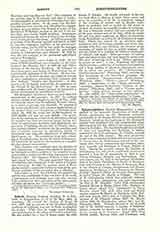

Schottenkloster (Scotch Monasteries), a name applied to the monastic foundations of Irish and Scotch missionaries on the European continent, particularly to the Scotch Benedictine monasteries in Germany, which in the beginning of the thirteenth century were combined into one congregation whose abbot-general was the Abbot of the monastery of St. James at Ratisbon. The first Schottenkloster of which we have any knowledge was Sackingen in Baden, founded by the Irish missionary, St. Fridolin, towards the end of the fifth century. The same missionary is said to have founded a Schottenkloster at Constance. A century later St. Columbanus arrived on the continent with twelve companions and founded Anne-gray, Luxeuil, and Fontaines in France, Bobbio in Italy. During the seventh century the disciples of Columbanus and other Irish and Scotch missionaries founded a long list of monasteries in what is now France, Germany, Belgium, and Switzerland. The best known are: St. Gall in Switzerland, Disibodenberg in the Rhine Palatinate, St. Paul’s at Besancon, Lure and Cusance in the Diocese of Besancon, Beze in the Diocese of Langres, Remiremont and Moyenmoutier in the Diocese of Toul, Fosses in the Diocese of Liege, Mont-St-Michel at Peronne, Ebersmunster in Lower Alsace, St. Martin at Cologne. The rule of St. Columbanus, which was originally followed in most of these monasteries, was soon superseded by that of St. Benedict. Later Irish missionaries founded Honau in Baden (about 721), Murbach in Upper Alsace (about 727), Altomunster in Upper Bavaria (about 749), while other Irish and Scotch monks restored St-Michel in Thierache (940), Walsort near Namur (945), and, at Cologne, the Monasteries of St. Clement (about 953), St. Martin (about 980), St. Symphorian (about 990), and St. Pantaleon (1042). Towards the end of the eleventh and in the twelfth century, a number of Schottenkloster, intended for Scotch and Irish monks exclusively, sprang up in Germany. About 1072, three Scotch monks, Marian, John, and Candidus, took up their abode at the little Church of Weih-St-Peter at Ratisbon. Their number soon increased and a larger monastery was built for them (about 1090) by Burgrave Otto of Ratisbon and his brother Henry. This became the famous Scotch Monastery of St. Jacob at Ratisbon, the motherhouse of a series of other Schottenkloster. It founded the Abbeys of St. Jacob at Würzburg (about 1134), St. Aegidius at Nuremberg (1140), St. Jacob at Constance (1142), Our Blessed Lady at Vienna (1158), St. Nicolas at Memmingen (1168), Holy Cross at Eichstatt (1194), and the Priory of Kelheim (1231). These, together with the Abbey of St. Jacob at Erfurt (1036), and the Priory of Weih-St-Peter at Ratisbon, formed the famous congregation of the German Schottenkloster which was erected by Innocent III in 1215, with the Abbot of St. Jacob at Ratisbon as abbot-general. In the fourteenth and fifteenth centuries most of these monasteries were on the decline, partly for want of Scotch or Irish monks, partly on account of great laxity of discipline and financial difficulties. In consequence, the abbeys of Nuremberg and Vienna were withdrawn from the Scotch congregation and repeopled by German monks in 1418. The Abbey of St. Jacob Würzburg was left without any monks after the death of Abbot Philip in 1497. It was then repeopled by German monks and in 1506 joined the congregation of Bursfeld. In 1595, however, it was restored to the Scotch congregation and continued to be occupied by Scotch monks until its suppression in 1803. The abbey of Constance began to decline in the first half of the fifteenth century and was suppressed in 1530. That of Memmingen also disappeared during the early period of the Protestant Reformation. The Abbey of Holy Cross at Eichstatt seems to have ceased early in the fourteenth century. In consequence of the Protestant Reformation in Scotland many Scotch Benedictines left their country and took refuge in the Schottenkloster of Germany during the sixteenth century. The Scotch monasteries in Ratisbon, Erfurt, and Würzburg again began to flourish temporarily, but all endeavors to regain the monasteries of Nuremberg, Vienna, and Constance for monks of Scotch nationality were useless. In 1692 Abbot Placidus Flemming of Ratisbon reorganized the Scotch congregation which now comprised the monasteries of Ratisbon, Erfurt, and Würzburg, the only remaining Schottenkloster in Germany. He also erected a seminary in connection with the monastery at Ratisbon. But the forced secularization of monasteries in 1803 put an end to the Scotch abbeys of Erfurt and Würzburg, leaving St. Jacob‘s at Ratisbon as the only surviving Schottenkloster in Germany. Though since 1827 this monastery was again permitted to accept novices, the number of its monks dwindled down to two capitulars in 1862. There being no hope of any increase, Pius IX suppressed this last Schottenkloster in his brief of September 2, 1862. Its revenues were distributed between the diocesan seminary of Ratisbon and the Scotch College at Rome.
MICHAEL OTT

